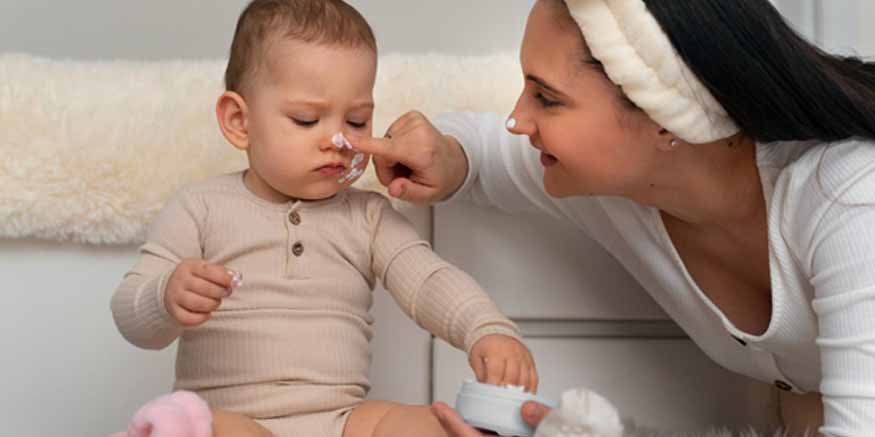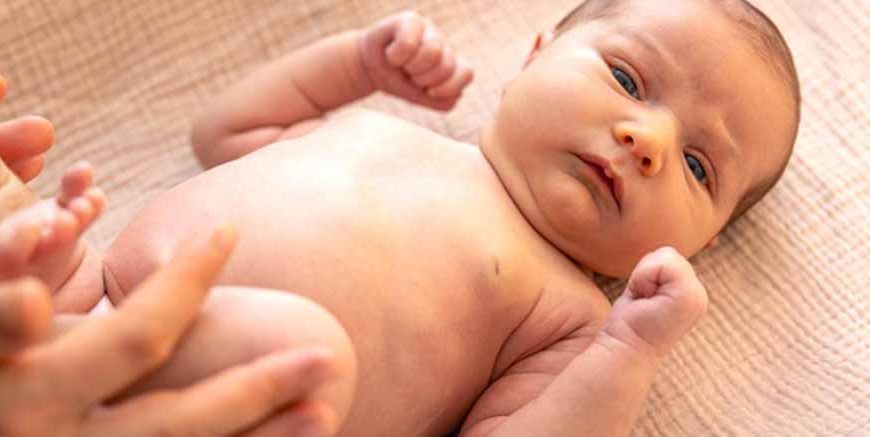The arrival of a newborn is associated with happiness, marvel and sometimes a few other different things. Some of these shocks that parents are most likely to experience include the situation where the baby starts to peel off. This may look quite alarming and probably even rather dangerous at this first glance, but it is actually quite unremarkable and normal in newborns’ development. The reasons for newborn skin peeling, the time it lasts and how to take care of newborn skin during this process will all be discussed in this article.
Table of Contents:
- Newborn Baby Skin Peeling
- Why Is Newborn Skin Peeling?
- How Long Does It Take for Newborn Skin to Peel?
- Do Newborns Skin Peel?
- Newborn Dry Skin Peeling
- Treating and Managing Newborn Skin Peeling
Newborn Baby Skin Peeling
When a baby is born, their skin has been wellness in the newborn and has been immersed in amniotic fluid for months. This skin is surprisingly elastic upon the arrival into the world and then it starts to develop in a new dry world. For this reason, it is not surprising that many newborns can go through skin tearing to an extent in the first 2 weeks of life.
This peeling can be felt all over but is most seen on the hands, feet and ankles. how much the baby peels depend on the kind of rash they have, some are mild and others can be severe and cause more peeling.
Why Is Newborn Skin Peeling?
That skin peeling is common among newborn babies primarily because, while in the womb, the baby is in water, but when born, it finds itself in the air. However, several factors contribute to this process:
- Vernix Caseosa: This protective, ‘Cheese like substance’ covers the babies in the womb. It helps in regulation of its temperature and it serves as a barrier against amniotic fluid. It has a tendency to peel off after birth as this coating is washed off or absorbed into the body skin.
- Moisture Loss: This is because the baby’ skin is exposed to the air, which results in sweating, then basically dries up and develops a skin peel.
- Natural Skin Shedding: Like the adults, babies also lose their skin cells frequently. However, this process is more expressed in newborns because their skin is very tender.
- Hormonal Changes: Changes from the hormones normally released during pregnancy towards the little one’s own production can cause alterations in the skin leading to the situation of peeling.
- Environmental Factors: The physical characteristics of the environment have an impact on the infant skin, specifically, temperature changes, and moisture affecting the skin, as well as introduction of new objects into the baby’s life experience, such as clothes or sheets.
Such information may help the parents understand that skin peeling is just a normal part of a baby’s development throughout the process of the transition to the extracorporeal environment.
How Long Does It Take for Newborn Skin to Peel?
The duration of newborn skin peeling can vary, but typically, this process resolves within a few weeks after birth. For most babies, peeling is most noticeable during the first week or two of life and gradually diminishes over the following weeks.
However, it’s important to note that every baby is unique, and the timeline can differ. Some factors that may influence the duration of peeling include:
– Gestational age at birth: Premature babies may experience delayed or prolonged peeling compared to full-term infants.
– Skin type and genetics: Some babies naturally have drier skin, which may lead to more pronounced or longer-lasting peeling.
– Environmental conditions: Factors like climate, humidity, and bathing practices can affect how quickly the skin adapts and stops peeling.
While most cases of newborn skin peeling resolve within the first month, some babies may continue to experience mild peeling or dry skin for several months. As long as the skin appears healthy otherwise and the baby seems comfortable, this extended peeling is generally not a cause for concern.

Do Newborns Skin Peel?
Yes, this is normal every newborn baby is expected to shed off the outer layer of the skin partially or completely. However, the degree of skin peeling may be partial or severe, and it may affect the baby’s skin to different extent or be observed at different levels. Violent peeling in some infants may range from mild scaling, which may be difficult to even observe, to moderate scaling on the palms and soles.
It is also important to understand that all babies do not have skin which looks like it is peeling. The extent to which peeling is seen depends on the amount of vernix caseosa that was produced at birth, the gestational age of the baby and other unique characteristics of the baby’s skin.
Newborn Dry Skin Peeling
Newborn skin is always slightly dry and often peeling, however, abnormal dryness may be sometimes observed. It is possible that newborn dry skin peeling will be more serious, and may be accompanied by redness, flakiness, and roughness.
Several factors can contribute to excessive dryness in newborn skin:
- Overexposure to water: Bathing too often, or bathing for an extended period, removes skin oil which causes dry skin.
- Harsh soaps or cleansers: This is because most commercially produced products have not been developed to provide sensitive skin like that on a newborn baby’s face.
- Low humidity environments: Cold and dry air worsened skin dryness where it becomes even worse in the cold season or in AC rooms.
- Certain skin conditions: However, such new-borns can develop other skin-related complications that make them prone to dry skin and peeling.
Treating and Managing Newborn Skin Peeling
While newborn skin peeling is a natural process that doesn’t typically require treatment, there are several ways to support your baby’s skin health and comfort during this transition:
- Gentle Cleansing: Water should be warm, not hot and only gentle, unscented baby soap should be used for washing the baby’s skin. Should avoid long baths, which should be taken in 5 to 10 minutes, to avoid skin becoming too dry.
- Avoid Harsh Products: Stay away from anything that comes with alcohol and other preservatives such as fragrances that may make the skin become dry.
- Dress Appropriately: You need to dress your baby inside soft clothes that will not cause discomfort by rubbing against his skin.

Lastly, newborn skin peeling is common and usually an ordinary way that signifies the baby is now out of the womb. Of course, men’s reduced involvement in child-rearing can be surprising or even shocking for new parents, but knowing more about this process can help calm down. With gentle skin treatment, and keeping an eye on your baby’s discomfort, it is possible to help your child get through this stage of their development. As indicated in all related products, always seek the services of a healthcare professional for advice on your new born baby.
For more such interesting blogs, Visit EuroKids















